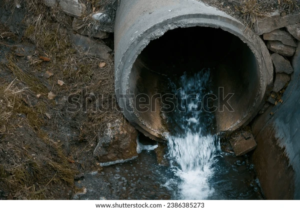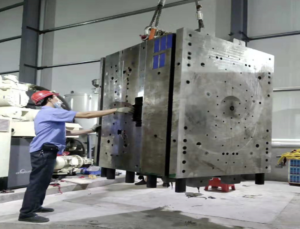Managing liquid waste is a complex process that involves several different steps. It is crucial for businesses to follow best practices and ensure regulatory compliance in order to protect the environment and public health.
The first step of this process is treating the liquid waste to prepare it for disposal. This involves screening and separation to separate organic and inorganic materials. It also includes processes like dewatering and thickening. Contact Liquid Waste Removal Perth now!

The treatment of liquid waste involves a series of processes designed to convert harmful contaminants into harmless byproducts or useful resources. The first step is to screen and separate the liquid waste to remove any large particles or non-organic materials that could interfere with the next steps in the process. A number of techniques are available for this task, including gravity settlers and mechanical separators. Next, the liquid waste undergoes anaerobic or aerobic digestion to break down organic contaminants into biogas and digestate. Biogas is a renewable energy source, and the nutrient-rich digestate can be used as fertilizer.
This step is particularly important because it prevents contaminated liquid waste from spreading into nearby waterways, soil, or groundwater aquifers. If this happens, the contaminants can enter the human body through the respiratory tract or the digestive system, and they can cause serious health problems. Contaminated soil can also lead to contamination of drinking water supplies. This is why it is so important to use containment devices like sediment basins, roll-off bins, or portable tanks during the collection and transport of liquid waste.
Once the waste has been screened and separated, it can be transported to a treatment facility for further processing. This step requires careful planning and execution to ensure that the waste doesn’t spill or leak during transit. It’s also crucial to follow the appropriate regulations for transportation and handling of hazardous liquid waste.
The liquid waste is then analyzed to determine its chemical composition and properties, which will dictate the most appropriate disposal method. During this step, it’s also possible to identify contaminants and other harmful substances. The information gathered at this stage will help companies choose the best disposal methods for their waste, and it’s important to maintain detailed records for future reference.
Despite the numerous benefits of managing liquid waste responsibly, many businesses still struggle with this aspect of their operations. For some, lack of access to proper facilities is a major barrier. In other cases, the cost of treatment is prohibitive. Regardless of the challenges, it’s crucial for companies to manage their liquid waste properly to ensure employee safety and environmental compliance.
Disposal
The disposal of liquid waste is a critical part of any business. Liquid wastes can contain a wide variety of contaminants, from hazardous chemicals to heavy metals and other industrial byproducts. When they aren’t properly disposed of, these contaminants can pollute the environment and cause serious health problems for people and animals. To ensure proper disposal, businesses must follow a number of steps to protect the environment and abide by regulations.
One of the most common methods for disposing of liquid waste is to dump it in an approved landfill site. This method involves putting the waste into barrels or tanks that can be picked up by professional waste management companies. This method doesn’t require the purchase of special equipment or facilities, and it also allows companies to comply with local environmental guidelines.
Other options for liquid waste disposal include incineration and recycling. For example, some nonhazardous liquid waste can be composted to produce organic fertilizer. In order to do this, the waste is first removed from its water content and then treated with microorganisms to turn it into useful compost. This helps reduce the amount of waste sent to landfills and it also provides a beneficial alternative for organic fertilizers.
In addition, some types of liquid waste can be incinerated and then converted into energy. This process is called combustion, and it uses high temperatures to break down the chemical compounds in the waste. This reduces the volume of the waste and destroys any harmful pathogens that may be present. This type of liquid waste disposal is a great option for businesses that want to reduce their carbon footprint and use sustainable resources.
There are many different ways to dispose of liquid waste, and each option depends on the specific needs of your business. However, it is important to always follow all local and federal regulations regarding liquid waste disposal. Failure to do so can result in heavy fines and damage your company’s reputation. In addition, it could lead to the shutdown of your facility if the violations are severe enough. To avoid these issues, you should work with a waste disposal company that has extensive experience handling liquid wastes.
Recycling
As part of responsible waste management, many liquids can be recycled and reused. This reduces the need to extract, refine and process raw materials, lowering energy costs and environmental impacts.
This is often referred to as a circular economy where products are repurposed for new uses without consuming fresh resources. Recycling also reduces the need for landfills, which contaminate soil and water with methane, carbon dioxide, and other harmful substances.
The most common forms of recyclable waste include organic and non-organic materials, industrial liquids, and ewaste. Organic waste includes domestic sewage, blood from slaughterhouses and animal byproducts, while industrial liquid waste can include solvents, chemicals, and oil. Non-organic materials like paper, glass and metals can be repurposed through a variety of processes. Metals can be recycled to create new aluminum cans, while paper goes through a recycling process that turns it into pulp and then into new paper. Glass is recycled into new glass containers, and ewaste can be turned into new computers or other electronic devices.
A number of challenges face the development and implementation of sustainable liquid waste disposal practices. These include community resistance, treatment limitations and limited availability of funding and technology. In addition, rapid industrialization introduces new pollutants that require specialized treatment technologies.
To overcome these challenges, companies can collaborate with a waste management company that offers responsible liquid waste disposal services. This option allows companies to avoid costly fines and ensure compliance with regulations.
A vacuum truck can be used to pump contaminated liquids into a secure tank for processing and storage. The tank is then transported to an authorized liquid waste disposal facility where it undergoes a series of treatments before being released for reuse. In addition to reducing disposal costs, this method helps businesses protect their workers from the potential risks of handling toxic substances and improves safety standards. This can lead to increased productivity and lower employee turnover rates. In addition, it decreases the amount of liquid waste that ends up in landfills and incinerators. This helps prevent the pollution of air, soil and water and provides an alternative to using natural resources that can be depleted in less than a century.
Incineration
Incineration converts waste materials into ash and gases through controlled combustion. Its advantages include reduced volume and less need for space in landfills, energy production in the form of heat, and less environmental pollution compared to other disposal methods. The process is also useful in the cleanup of contaminated sites. Across the United States, both offsite and onsite incineration is used as a cleanup strategy at more than 100 Superfund sites.
Liquid waste incineration can involve burning hazardous or non-hazardous liquid waste, turning it into ash and gas. This is accomplished using specialized incinerators that can control the temperatures and emissions produced. In some cases, chemical neutralization is necessary to ensure that toxic substances are not emitted during the process. Once the liquid waste is converted to ash and gas, the remainder is collected in an ash pit. It may then be sold to entities that use it for various purposes or disposed of at designated landfills.
Incineration of solid wastes, such as municipal waste, hazardous waste and medical waste, is a common practice in many regions around the world. The combustion process releases carbon dioxide, water vapor, nitrogen oxides, ash and soot into the air, which can negatively impact air quality and exacerbate health conditions, such as asthma and bronchitis. However, if proper safety measures are followed, incineration can provide a safe alternative to landfills.
The ash generated by incineration can be utilized for various purposes, such as building and road construction materials. It is also an excellent aggregate for lightweight blocks, pavement concrete and bulk fill. Some environmentally conscious entities are even utilizing the ash to make bricks, tiles and shingles, or turning it into energy in the form of electricity.
Because incineration requires high temperatures, it is a costly method of waste management. In addition, incinerators are often subject to strict environmental regulations due to potentially hazardous emissions. In order to avoid potential issues, companies handling liquid waste must have a comprehensive plan for inspections, reporting and monitoring. These data should be analyzed and documented to establish the effectiveness of the company’s procedures.





